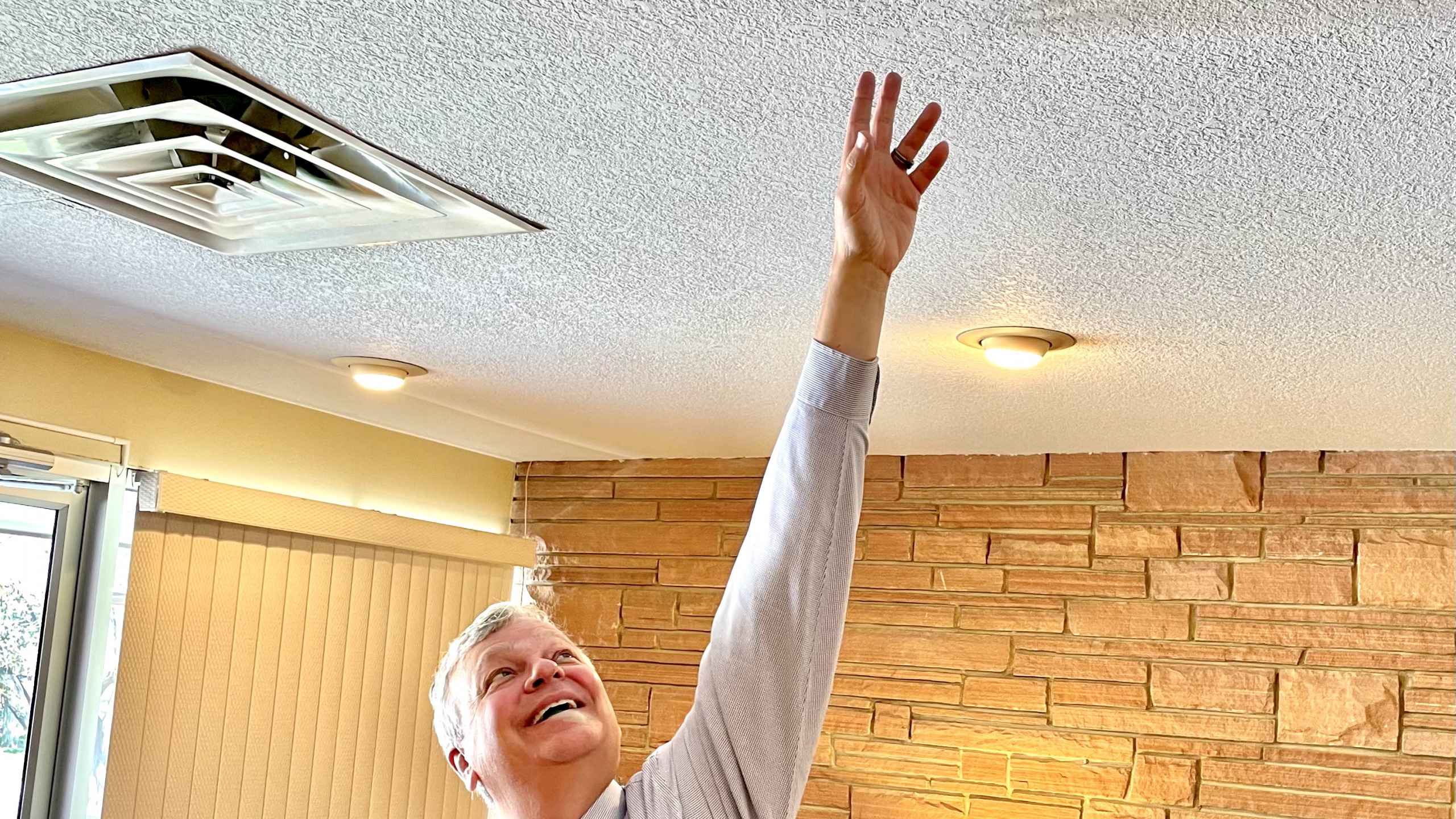By Douglas Inglish … By the time I turned 16, I had developed an odd, but occasionally useful, ability. In my bare feet I could touch an eight-foot ceiling with the fingertips of one hand. Normally that would be just beyond reach for a person of my height, but my arms are absurdly long. (For reference, my predecessor Eric Nelson and I have the same sleeve length, even though he is several inches taller.)
When we moved into our new house in Colorado, there was a push pin in the ceiling of one of the bedrooms. Because the head stuck out from the surface, I knew I could just get a grasp on it and pull it out, and reached up to do so. But I couldn’t get it. I had to go downstairs and get a step stool so I could pull it out.
I was dumbfounded. As any contractor can tell you, both 2 x 4 studs and drywall come in eight-foot sections specifically to make it easy to put up walls that give you a standard eight-foot ceiling. But this room had a ceiling height of eight feet and one inch. In fact, a little investigation showed that all the ceilings in my house were eight feet one inch high. Why in the world would anyone do that? It was more work and it sure wasn’t enough difference to notice.
My move to Colorado required not only a new place to live, but a whole new set of professionals (mechanic, dentist, etc.). When I showed up for my first appointment with my new doctor, the mystery of the too-tall ceilings in my new house was solved. The physician’s assistant stood me up against the wall and declared, “Six feet even.”
“No,” I corrected him, “Six foot one.”
He stood his ground. “No, six feet even.”
I was ready to pull out my new driver’s license and prove him wrong when the light dawned: It’s begun; I’m shrinking! Theoretically, I knew that people lose height as they age, but it had not occurred to me that I should be expecting it quite yet.
Close on the heels of that epiphany came another: My ceilings are not eight feet, one inch high. That doesn’t even make sense. I’m the problem, not the contractor.
Well, I always like a good laugh, and if it’s on me then it’s still a good laugh. But getting older isn’t what I find funny about this. What makes me laugh about it is my very human reaction when I first got evidence that I was getting shorter. Instead of thinking that I was the problem, I reached an entirely improbable conclusion and blamed the person who built my house. It never even occurred to me that the ceiling was perfectly normal, it was I who needed a redefinition of normal.
That’s the way we all are, going back to the biblical Adam’s refusal to own his behavior when confronted about the fruit he ate. When a problem rears its head, it is amazing what ridiculous conclusions we will reach in order to avoid admitting that, yes, this is on me.
I hope this change in subject doesn’t give you whiplash, but how is your local church budget doing? Having a hard time spending it all? Or, and this seems more likely, could you easily find good uses for it if you had more? Even worse, is the board discussing where to cut expenses in order to cover the bills?
Like everything else, the natural reaction to a shortfall in the church budget is to think that the problem is with other people, not me. People with higher income, or who bought their house when prices were reasonable, or whose children are finished with school and out of the house. If those people did their part, the budget would be fine!
Okay, I’m not going to beat this into the ground, because you already get the point. Instead of always thinking that the problem must lie outside of ourselves, we need to own our piece of the problem. Even more importantly, no matter who is to blame for a problem, solutions nearly always start with me stepping up and doing my part.
It’s like when I couldn’t reach the push pin in the ceiling. Even when I was misidentifying what the problem was, I knew the solution was a step stool.
I also knew who had to go get it. And no, it was not going to be the contractor.
–Douglas Inglish is RMC vice president and stewardship director.

